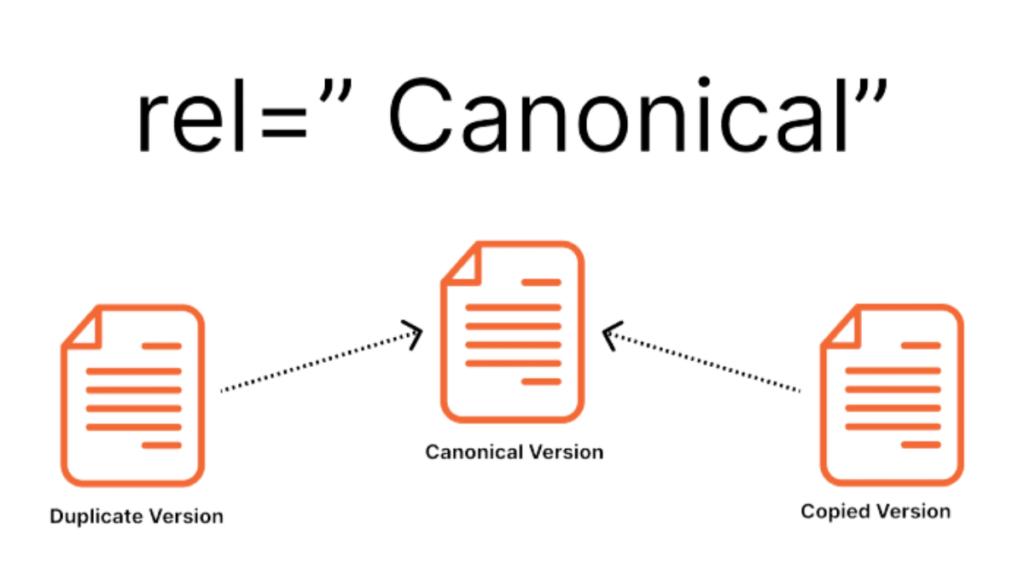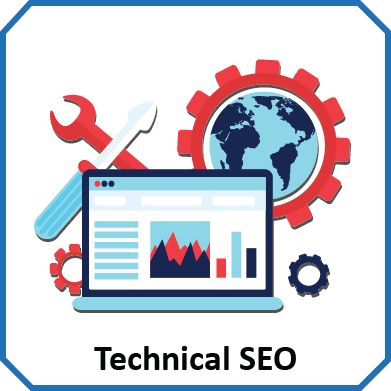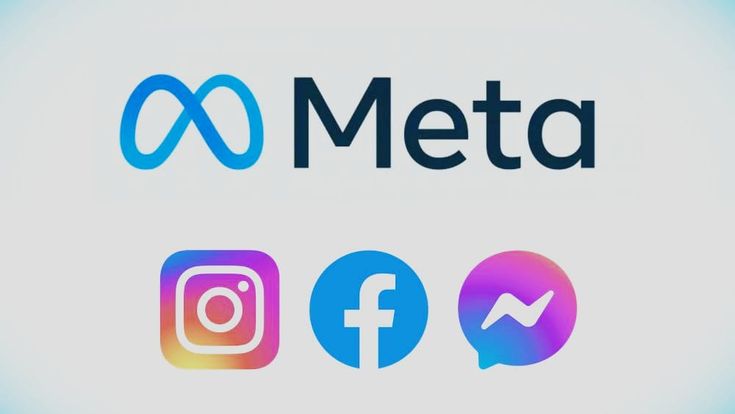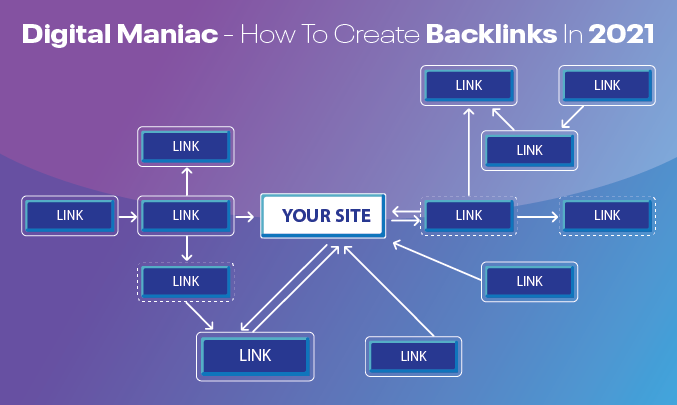What is Canonical Text?

Canonical text refers to an authoritative and widely accepted work within a particular field, serving as a benchmark for reference, study, and interpretation. The term “canonical” originates from the Greek word kanon, meaning “rule” or “standard,” which signifies its role in defining norms and setting guidelines. Canonical texts exist in various domains, including literature, religion, linguistics, and digital content, where they establish authenticity and credibility. In literature, canonical texts are classic works that have shaped storytelling, literary traditions, and critical thought, such as Shakespeare’s plays, Homer’s epics, and Jane Austen’s novels. These texts are studied in academia to understand historical, cultural, and philosophical perspectives. In religious studies, canonical texts like the Bible, Quran, Vedas, and Torah serve as foundational scriptures that guide faith, ethics, and spiritual practices. Linguistics also relies on canonical texts to analyze the evolution of language, grammar, and syntax, referencing works by Geoffrey Chaucer or Noam Chomsky Definition of Canonical Text A canonical text refers to an authoritative, widely accepted, and recognized work that serves as a standard within a particular domain. The word “What is Canonical Text” is derived from the Greek term kanon, which means “rule” or “standard.” These texts are often used as benchmarks or references due to their credibility, authenticity, and historical importance. Canonical Text in Literature In literary studies, a canonical text is a work that holds high cultural, educational, and intellectual value. These texts form the literary canon, influencing generations of writers, scholars, and readers. They are often included in academic curricula and considered essential for understanding literary history and evolution. Examples of Literary Canonical Texts: These works have shaped literary traditions, reflecting the cultural, historical, and philosophical ideas of their time. Canonical Text in Religious Studies Religious canonical texts are sacred writings that form the foundation of faith, beliefs, and practices in different religions. Examples of Religious Canonical Texts: These texts guide moral, ethical, and spiritual aspects of life, influencing millions of followers worldwide. Canonical Text in Linguistics In linguistics, canonical texts play an essential role in studying the development of language, grammar, and literary conventions. These texts often serve as models for understanding the evolution of language. Examples: Canonical Text in Digital Content and SEO In the digital world, the concept of “canonical” takes on a slightly different meaning. Canonical URLs in SEO refer to the preferred version of a webpage that search engines should index. This practice helps prevent duplicate content issues and ensures proper ranking on search engine results pages (SERPs). A canonical tag (<link rel=”canonical” href=”https://example.com/page”>) tells search engines which version should be prioritized. The Importance of Canonical Texts Canonical texts serve as foundational references across multiple domains, preserving cultural heritage, intellectual traditions, and digital credibility. Their significance lies in: How to Identify a Canonical Text: Challenges Surrounding Canonical Texts Despite their importance, canonical texts are sometimes subject to debate and criticism. Some common challenges include: Conclusion Canonical texts play a vital role in literature, religion, linguistics, and digital content management. They serve as benchmarks, guiding principles, and authoritative references that shape cultural, intellectual, and online landscapes. Understanding the significance of canonical texts allows us to appreciate their influence and ensure their appropriate application in various domains..
Basic computer course

computer course This Basic Computer Course is designed for beginners who want to develop fundamental computer skills. By the end of the course, students will be able to confidently use a computer for personal, academic, and professional purposes.The computer course curriculum begins with an introduction to computer hardware, computer software, and computer operating systems, ensuring students develop a strong computer foundation. For those interested in advanced computer skills, the computer training program delves into web development, computer coding languages like Python and Java, and computer networking principles. Through hands-on computer exercises and real-world computer projects, learners will acquire practical computer experience, allowing them to apply their computer knowledge confidently in various computer-related scenarios. By the end of the computer course, students will have a solid computer understanding, enabling them to use computer technology efficiently in personal, academic, and professional computer settings. No prior computer experience is required, making it accessible to learners of all backgrounds. Enroll in the computer course today and master computer skills! Course Modules and Details 1. Introduction to Computers 2. Operating Systems and File Management 3. Microsoft Office and Productivity Software 4. Internet and Web Navigation 5. Digital Communication and Social Media 6. Cybersecurity and Online Safety 7. Computer Troubleshooting and Maintenance 8. Introduction to Coding (Optional) Course Duration and Certification By enrolling in this Basic Computer Course, you will build essential digital skills that improve your job opportunities and personal productivity.
Interior design near me

Introduction to Interior Design Interior design near me is the art and science of enhancing a space to create a functional and aesthetically pleasing environment. Interior design near me involves planning, research, and management of projects to maximize space utilization and visual appeal. A well-executed interior design near me enhances comfort and improves the ambiance and usability of a space. Color Theory in Interior Design Color is essential in interior design near me as it sets the mood and atmosphere. Warm colors like red, orange, and yellow create energy, ideal for social spaces in near me Cool colors like blue, green, and purple provide a calming effect, commonly used in bedrooms. Neutral colors like white, beige, and Gray offer a versatile backdrop in near me. Accent colors in interior design near me highlight specific areas, adding contrast and drawing attention to key features. Space Planning and Layout in Interior Design Effective space planning is a critical aspect of interior design near me. Understanding the function of a space determines its layout near me ensures that furniture arrangement allows easy movement and accessibility. Traffic flow is essential in near me to avoid congestion. Zoning in near me divides spaces into functional sections like seating areas and workspaces near me aims to maximize functionality and comfort. Lighting Design in Interior Design Lighting plays a vital role in interior design near me, enhancing ambiance and functionality. Ambient lighting provides general illumination near me, while task lighting focuses on specific activities. Accent lighting near me highlights artworks and architectural features. Natural lighting is an integral part of near me, with windows and skylights allowing daylight to enhance the space. Furniture and Decor Selection in Interior Design Furniture selection is crucial in interior design near me for both function and aesthetics near me prioritizes comfort and usability while maintaining style consistency. Material quality near me ensures durability. Storage solutions in interior design near me, such as multi-functional furniture, keep spaces organized. Thoughtful furniture choices elevate the near me of any space. Flooring and Wall Treatments in Interior Design Flooring and wall treatments are significant elements in interior design near me. Hardwood flooring adds warmth, while tile is durable in interior design near me. Carpet provides comfort, while vinyl and laminate offer budget-friendlynear me options. Wall treatments in interior design near me, such as paint, wallpaper, wood paneling, and textured finishes, enhance visual appeal and add character to the Incorporating Green Design in Interior Design Sustainability is increasingly important. Energy-efficient lighting like LED bulbs reduces energy consumption. Sustainable materials such as bamboo and recycled wood promote eco-friendly. Indoor plants improve air quality and aesthetics. Environmentally responsible choices contribute to healthier solutions. Incorporating Green Design in Interior Design Sustainability is increasingly important in Energy-efficient lighting like LED bulbs reduces energy consumption. Sustainable materials such as bamboo and recycled wood promote eco-friendly. Indoor plants improve air quality and aesthetics in Environmentally responsible choices contribute to healthier solutions. Final Touches and Personalization in Interior Design Final touches bring personality to . Accessories like rugs, cushions, and artwork create warmth. Layering textures and patterns adds depth to . Personalization in includes family photos, travel souvenirs, and custom furniture, making the space unique. A well-executed reflects individuality. Final Touches and Personalization in Interior Design Final touches bring personality to Accessories like rugs, cushions, and artwork create warmth. Layering textures and patterns adds depth to Personalization in includes family photos, travel souvenirs, and custom furniture, making the space unique. A well-executed reflects individuality. Conclusion combines creativity, functionality, and planning. Whether designing residential or commercial spaces, fundamental principles ensure a balanced and appealing environment. Considering color theory, space planning, lighting, furniture, and sustainability enhances. The goal of is not only aesthetics but also improving overall experience and well-being. Thoughtful transforms spaces into comfortable, functional, and inspiring environments.
What is Technical SEO? A Comprehensive Guide to Website Optimization

In the world of digital marketing, SEO (Search Engine Optimization) plays a vital role in improving a website’s visibility on search engines. While content and backlinks are essential, technical SEO ensures that your website is structured, accessible, and optimized for search engines to crawl and index efficiently. This article explores technical SEO, its key components, best practices, and how it can help improve your website ranking. Understanding Technical SEO Technical SEO refers to the optimization of a website’s infrastructure to enhance search engine crawling and indexing. Unlike on-page and off-page SEO, technical SEO focuses on backend improvements, ensuring that search engines can properly access and understand your site’s content. It helps in making a website faster, easier to navigate, and more understandable for search engines. Importance of Technical SEO Without proper technical SEO, even the best content may struggle to rank. It ensures that your website is: Key Elements of Technical SEO 1. Website Crawling and Indexing Search engines use bots to crawl web pages. Ensuring your site is properly indexed is crucial for ranking. Tools like Google Search Console can help monitor indexing issues. To optimize crawling and indexing: 2. Site Architecture and URL Structure A well-structured website makes it easier for search engines and users to navigate. Use clean, logical URL structures and proper internal linking. Best practices include: 3. Page Speed Optimization Page speed is a ranking factor. Slow-loading websites lead to high bounce rates. To improve speed: 4. Mobile-Friendliness With Google’s mobile-first indexing, ensuring your site is responsive and provides a seamless experience on mobile devices is critical. To achieve this: 5. HTTPS and Website Security Google prioritizes secure websites. An SSL certificate ensures your website runs on HTTPS, enhancing security and trust. Key steps to improve security include: 6. Structured Data Markup Schema markup helps search engines understand content better. Implementing structured data can improve rich snippets and visibility in search results. Examples include: 7. XML Sitemap and Robots.txt An XML sitemap helps search engines discover pages, while a properly configured robots.txt file ensures that unwanted pages are not indexed. Best practices include: 8. Canonical Tags and Duplicate Content Using canonical tags prevents duplicate content issues, ensuring that search engines index the preferred version of a page. Key steps include: 9. Fixing Broken Links Broken links negatively impact user experience and SEO. Regularly check and fix broken links using tools like Screaming Frog or Google Search Console. Solutions include: 10. Implementing Hreflang for International SEO For multilingual websites, hreflang tags help search engines understand language variations and serve the correct version to users. Key points include: How to Improve Technical SEO Common Technical SEO Mistakes to Avoid Conclusion Technical SEO is the backbone of a well-optimized website. By addressing technical aspects like site structure, security, speed, and indexing, you can improve your website’s visibility and rankings. Regular audits and updates will ensure your site remains competitive in search engine results. Implementing best practices in technical SEO will enhance user experience, increase organic traffic, and ensure long-term success in the digital landscape.
What is Meta Ads

Meta Ads, formerly Facebook Ads, are online advertisements on platforms like Facebook, Instagram, Messenger, and Audience Network. Meta provides businesses and individuals with tools to promote products and services to a large audience. Whether a business aims to increase brand awareness, generate leads, or drive sales, Meta Ads offer the tools necessary to achieve these goals. With billions of active users on Meta platforms, advertisers can ensure that their message reaches the right audience at the right time. Meta Ads are particularly effective because they allow businesses to target specific audiences with precision. Meta Ads help businesses reach potential customers based on interests, behavior, and demographics. How Meta Ads is Work Meta Ads operate on an auction system. Advertisers compete for ad space, and Meta selects ads based on: How to Use Meta Ads: 1: Create a Meta Ads Business Account 2: Set Up an Meta Ad Account 3: Access Meta Ads Manager Meta Ads Manager is the main tool for creating and managing ads. Access it through Facebook or Ads Manager. 4: Choose a Campaign Objective Meta Ads offer different objectives: 5: Define Your Audience: 6: Select Ad Placement 7: Set Your Budget and Schedule 8: Create the Meta Ads and select the ads format: 9: Review and Publish After setting up the ad, review all details and click “Publish.” Meta reviews before they go live to ensure compliance with their policies. Successful Meta Ads Running Tips Understanding Meta Ads Costs Conclusion Meta Ads are a powerful tool for business promotion. With the right strategy, targeting, and budget, advertisers can reach their ideal audience and achieve marketing goals. Experiment with different ads, track performance, and optimize campaigns for the best results.
You tube marketing

What is You tube marketing YouTube marketing is the process of promoting your brand, product or service on YouTube. It involves a mix of various organic and paid approaches such as uploading your own videos or paying for YouTube ads. Additionally, brands may even include influencers in their YouTube marketing mix. How to do you tube SEO 1. Conduct keyword research Keyword research is an essential part of SEO for YouTube. In other words, you want to identify the words and phrases your audience will likely use when searching for content like yours. These tools can be a great help. However, YouTube’s search bar also suggests related queries as users’ type, and these suggestions can be a goldmine. In addition to your general keyword research, our YouTube experts recommend leveraging the YouTube search bar to find related search terms. Improve Audience Retention & Engagement YouTube prioritizes videos that keep viewers watching and encourage interaction. Hook viewers in the first 15 secondsUse pattern interrupts (B-rolls, animations, zoom-ins)Encourage likes, comments, and sharesAsk a question to engage viewers Use YouTube Playlists Promote Your Video Share on social media (Facebook, Instagram, Twitter, Reddit).Embed on your blog or website. Post in related forums or groups. Organize related videos into a playlist (boosts watch time). Use keyword-rich playlist names. Description Optimization Use primary keywords naturally in the first 2 sentences. Write a detailed summary (200-300 words) including related keywords.Add timestamps to improve user engagement. Include links to social media, website, or affiliate products. Grow your business with YouTube marketing YouTube is one of the best platforms for brands investing in video marketing. With billions of users and sky-high engagement rates, it offers marketers a golden opportunity to connect with their audiences. Ready to dive into YouTube marketing? Don’t forget to keep track of your progress and pivot your strategy as needed. Use you tube analytics tools to understand the impact of YouTube marketing on your business. YouTube marketing is an essential strategy for businesses looking to expand their reach and engage with audiences worldwide. With over 2.5 billion monthly active users, YouTube provides a massive platform for brand promotion, product showcasing, and customer engagement. To succeed in YouTube marketing, businesses must focus on creating high-quality, engaging content tailored to their target audience. Video types such as tutorials, product demonstrations, testimonials, and behind-the-scenes footage can help establish credibility and build trust. Additionally, optimizing video titles, descriptions, and tags with relevant keywords improves visibility in search results. Consistency is key—regular uploads keep viewers engaged and improve channel performance. Utilizing YouTube Shorts, live streaming, and community posts further boosts audience interaction. Collaborating with influencers and running YouTube Ads can enhance brand exposure and drive conversions. Engagement metrics, such as likes, comments, shares, and watch time, determine a video’s success. Businesses should encourage viewer interaction by responding to comments and incorporating calls to action. Analyzing YouTube Analytics helps refine strategies for better results. Incorporating YouTube into a digital marketing strategy not only strengthens brand presence but also drives traffic, boosts sales, and fosters long-term customer relationships. With the right approach, YouTube marketing can be a game-changer for any business.
Interior Designing

What is Interior Designing? Interior designing is the art and science of making spaces beautiful and functional. It includes choosing colors, furniture, decorations, and layouts to create a comfortable and stylish environment. Interior designers plan and decorate homes, offices, hotels, and other places to improve their appearance and usability. What Are the Benefits of Interior Designing? What Are the Different Styles in Interior Designing? How to Choose the Right Interior Design Institute? If you learn Interior Designing Course so visited: GURU NANAK INSTITUTED OF COMPUTER EDUCATION. You can decorate your home without spending too much money. Here are some tips: How to Make Small Spaces Look Bigger? What Are the Latest Trends in Interior Designing? Interior design trends keep changing. Some popular trends include: Conclusion Interior designing is a creative and exciting field that makes spaces functional and beautiful. Whether you want to design your own home or become a professional interior designer, understanding the basics is important. With the right knowledge and creativity, you can transform any space into a comfortable and stylish place. Interior design not only improves the look of a space but also enhances comfort, functionality, and overall well-being.
What is Email Marketing? A Complete Guide for 2025
Email marketing is one of the most effective and affordable digital strategies, allowing businesses to communicate directly with their audience. Whether you’re looking to promote products, nurture leads, or increase brand awareness, email marketing helps you build long-term relationships with customers. With over 4.5 billion email users worldwide, businesses leverage to engage with potential customers, boost sales, and increase conversions. But what exactly is email marketing, and how can you use it effectively? This guide will cover everything you need to know, from its benefits and types to best practices and tools. What is Email Marketing? is a direct digital strategy that involves sending emails to prospects and customers. It is used to: ✔️ Promote products and services✔️ Engage with subscribers through newsletters✔️ Nurture leads and increase conversions✔️ Provide personalized offers and discounts✔️ Retarget customers with abandoned cart emails Why is Email Marketing Important? Email marketing plays a crucial role in modern business strategies. Here’s why it remains one of the top marketing channels: 1. High ROI (Return on Investment) According to research, email marketing delivers an average ROI of $42 for every $1 spent, making it one of the most cost-effective strategies. 2. Direct and Personalized Communication Unlike social media or paid ads, emails land directly in the subscriber’s inbox, allowing businesses to deliver personalized messages. 3. Automation and Scalability With tools, businesses can automate campaigns, saving time while still engaging with a large audience. 4. Builds Customer Relationships Consistent communication through newsletters and promotional emails keeps customers engaged and fosters brand loyalty. 5. Better Customer Retention helps businesses retain customers by providing personalized recommendations, special discounts, and relevant updates. Types of Email Marketing There are different types of email marketing campaigns, each serving a unique purpose. 1. Welcome Emails A welcome email is the first interaction a subscriber receives after signing up. It introduces the brand, sets expectations, and may include an exclusive offer. 2. Promotional Emails These emails promote new products, services, or discounts to encourage sales. They often include a strong call-to-action (CTA) like “Shop Now” or “Claim Your Discount.” 3. Transactional Emails These are automated emails triggered by user actions, such as purchase confirmations, order tracking, and password reset requests. 4. Newsletter Emails Newsletters are regular updates that provide valuable content, industry news, or brand updates to keep subscribers engaged. 5. Abandoned Cart Emails When a customer adds items to their cart but doesn’t complete the purchase, an abandoned cart email reminds them to return and complete their order. 6. Re-engagement Emails If subscribers haven’t interacted with previous emails, re-engagement emails attempt to bring them back with special offers or exclusive content. How to Create a Successful Email Marketing Strategy To maximize the effectiveness of your email marketing campaigns, follow these proven strategies: 1. Build a High-Quality Email List Avoid purchasing email lists, as they often lead to high bounce rates and spam complaints. ✔️ Website Sign-Up Forms – Encourage visitors to subscribe with lead magnets like eBooks, discounts, or free trials.✔️ Social Media Promotions – Use social media to attract subscribers with exclusive offers.✔️ Pop-Ups and Exit-Intent Forms – Capture emails before visitors leave your website. 2. Segment Your Audience Not all subscribers have the same interests. Segmenting your email list based on demographics, purchase behavior, and engagement levels allows for personalized campaigns. 3. Personalize Your Emails Use subscribers’ names, past purchases, and browsing behavior to make emails more relevant and engaging. Personalized emails generate higher open rates and click-through rates (CTR). 4. Design Mobile-Friendly Emails Over 60% of emails are opened on mobile devices. Ensure your emails are responsive and easy to read on all screen sizes. 5. Include a Clear Call-to-Action (CTA) A strong CTA button like “Shop Now,” “Get Started,” or “Download Free Guide” helps guide the reader toward the desired action. 6. Automate Your Email Campaigns Use email automation tools to send emails based on user behavior, such as: 7. Monitor and Analyze Email Performance Regularly track email metrics like: Open Rate – Percentage of recipients who open your emailsClick-Through Rate (CTR) – Percentage of recipients who click links in the email Conversion Rate – Percentage of recipients who complete the desired action Best Email Marketing Tools To streamline your email marketing efforts, use these top tools: ✔️ Mailchimp – Best for beginners with automation and analytics.✔️ ConvertKit – Great for content creators and bloggers.✔️ HubSpot – Advanced email marketing with CRM integration.✔️ ActiveCampaign – Offers automation and segmentation features.✔️ AWeber – Simple and affordable email marketing tool. Conclusion Email marketing continues to be a powerful tool for businesses in 2025, providing direct communication, personalization, and high ROI. By following the best practices outlined in this guide, you can create successful email marketing Are you ready to take your email marketing strategy to the next level? Visit GNICE Soft for expert digital marketing solutions! 🚀
How to Create Backlinks:

Introduction Backlinks are links from one website to another. They help improve a website’s ranking on search engines like Google. The more high-quality backlinks a website has, the better its chances of appearing at the top of search results. What Are Backlinks? Backlinks, also called “inbound links” or “incoming links,” are links that point from one website to another. If Website A links to Website B, then Website B has a backlink from Website A. These links tell search engines that the linked website has valuable content. Why Backlinks are Important? Backlinks are important Backlink Rank a Website’s A backlink is a link from one website to another. It helps improve a website’s search engine ranking. When a website gets a backlink from a trusted site, search engines see it as a vote of confidence. This makes the website more valuable and improves its position in search results. Backlinks are important for SEO (Search Engine Optimization). Websites with more quality backlinks rank higher on Google and other search engines. However, not all backlinks are good. A backlink from a high-quality, relevant website is better than many backlinks from low-quality sites. To get quality backlinks, you can write guest posts, share useful content, and list your site in online directories. Social media sharing can also help attract backlinks. In conclusion, backlinks are essential for improving website traffic and ranking. A strong backlink strategy can help a website grow and reach more people online. Types of Backlinks There are two types of backlink: 1. Write High-Quality Content 2. Guest Posting: 3. Social Media Backlinks Share your website link on platforms like: 4. Broken Link Building 5. Create Infographics 6. Forum and Blog Comments 7. Submit to Article Submission Sites Some sites allow you to publish articles with backlinks. 8. HARO (Help a Reporter Out) 9. Internal Linking Internal links connect different pages of your website, improving SEO. Always link relevant pages. 10. Get Reviews and Testimonials Write reviews for businesses and include your website link. 11. Use Quora and Reddit: Answer relevant questions and include your website link where appropriate. 12. Things to Avoid While Creating Backlinks Avoid bad practices like: 13. How to Check Your Backlinks Use tools like: These tools show where your backlinks come from and their quality. 14. Why Hight-Quality Backlinks: How to Get Good Backlinks? Conclusion Creating backlinks takes time, but it is worth the effort. Focus on writing high-quality content, guest posting, directories, and social media. Avoid spammy methods and prioritize quality sources. With patience and consistency, you will see improvements in your website ranking and traffic
How AI is Transforming Education: The Future of Learning
Artificial Intelligence (AI) is revolutionizing various industries, and education is no exception. With advancements in AI-powered tools and technologies, learning is becoming more personalized, efficient, and accessible. From smart tutoring systems to automated grading and virtual learning assistants, AI is reshaping the way students learn and teachers teach. In this blog, we will explore How AI is Transforming Education: The Future of Learning and the benefits it brings to students, educators, and institutions. 1. Personalized Learning with AI One of the biggest advantages of AI in education is personalized learning. ✔️ Examples include platforms like Coursera, Khan Academy, and Duolingo.✔️ Smart Tutoring Systems: AI tutors provide real-time feedback and support in subjects like math, science, and languages.✔️ AI-Powered Learning Assistants: Chatbots and virtual assistants help answer student queries and guide them through coursework. 2. AI-Powered Virtual Classrooms The rise of online education has led to the development of AI-driven virtual classrooms. These classrooms use AI to create a more interactive and engaging learning environment. ✔️ Speech Recognition & Language Processing: AI tools like Google’s Speech-to-Text help students with disabilities participate in virtual classes.✔️ Automated Attendance Tracking: Facial recognition and AI algorithms track student presence in online classes.✔️ AI-Powered Interactive Learning: AI integrates with AR (Augmented Reality) and VR (Virtual Reality) to create immersive educational experiences. 3. AI for Automated Grading & Assessment Grading exams and assignments manually is time-consuming. AI simplifies this process by automating grading and assessments, saving educators time and ensuring fair evaluation. ✔️ Instant Grading for Objective Tests: AI evaluates multiple-choice and fill-in-the-blank questions instantly.✔️ AI-Powered Essay Scoring: Tools like Grammarly and Turnitin analyze grammar, sentence structure, and content quality. 4. AI Chatbots for Student Support AI chatbots are transforming student support services by offering instant responses to queries and providing round-the-clock assistance. ✔️ 24/7 Student Assistance: AI chatbots answer common questions related to courses, admissions, and assignments.✔️ AI-Powered Career Guidance: AI helps students choose courses based on their interests and future career goals.✔️ Mental Health Support: AI-powered chatbots like Woebot offer emotional support and mental well-being guidance. 5. AI in Special Education AI is making education more inclusive and accessible for students with disabilities. ✔️ Speech-to-Text & Text-to-Speech Tools: Helps students with hearing or speech impairments.✔️ AI-Powered Assistive Technology: AI tools like Seeing AI help visually impaired students understand text and images.✔️ Real-Time Translation: AI-powered translation tools break language barriers in multicultural classrooms. 6. AI in Curriculum Design & Content Creation AI assists educators in curriculum planning by analyzing trends and suggesting optimized course structures. ✔️ AI-Based Content Generation: AI tools help create engaging course materials and quizzes.✔️ Smart Recommendations: AI suggests additional learning resources based on student progress.✔️ Data-Driven Insights: AI analyzes student performance data to improve course effectiveness. 7. AI for Teacher Training & Professional Development Educators can use AI for skill development and continuous learning. ✔️ AI-Powered Training Modules: Personalized courses for teachers to enhance their teaching methods.✔️ AI-Based Feedback: Real-time feedback on teaching performance using AI analytics.✔️ Virtual Simulations: AI-driven simulations provide real-world teaching experience. 8. Challenges & Ethical Concerns of AI in Education Educational institutions must ensure responsible AI implementation by addressing data privacy concerns and ensuring a balance between technology and human interaction. Conclusion AI is transforming education by making learning more personalized, accessible, and efficient

